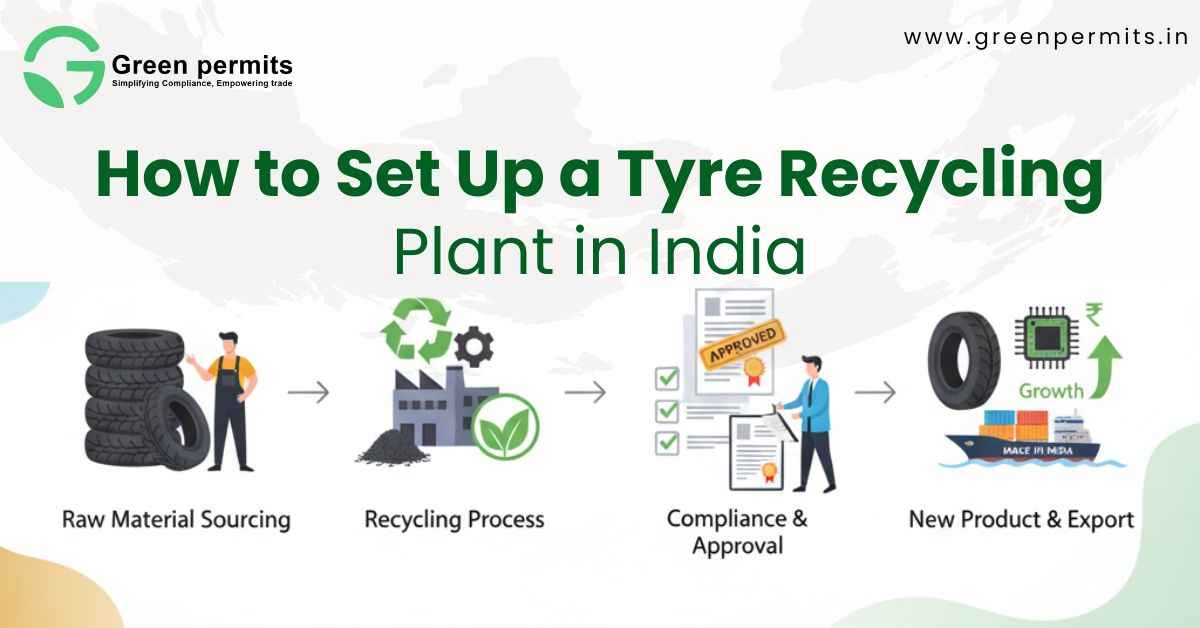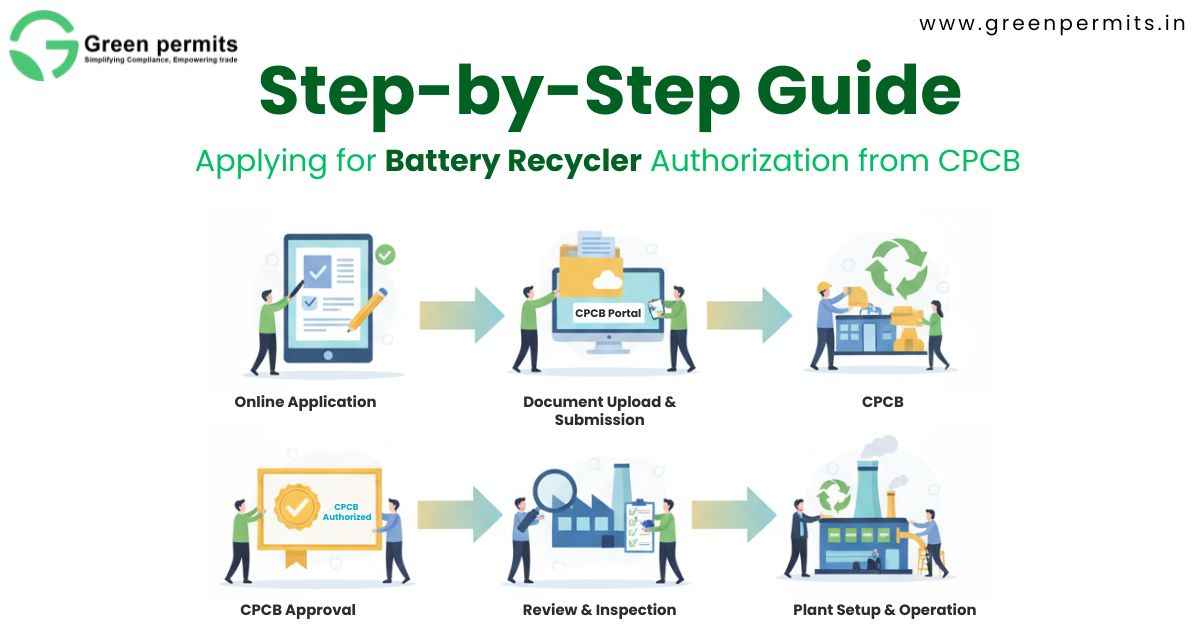A Wake-Up Call from India’s E-Waste Future
When Rajiv Mehta, a Pune-based EV battery dealer, was first asked to submit his EPR compliance report, he thought it was just another formality. But missing that deadline cost him ₹2 lakh in penalties and a three-month import delay.
That experience taught him — and many others — that battery recycling is not just about the environment; it’s about business continuity.
Today, as India pushes toward its clean-energy and e-waste reduction goals, lithium-ion battery recycling has become a central part of both sustainability strategy and regulatory compliance.
India’s E-Waste & Clean Energy Mission: Why Recycling Matters
India generates over 1.6 million tonnes of e-waste annually, according to the Central Pollution Control Board (CPCB). Out of this, battery waste is one of the fastest-growing categories — driven by the explosive demand for EVs, smartphones, and solar storage systems.
Without proper recycling, this waste doesn’t just end up in landfills — it leads to toxic leaching, metal contamination, and loss of valuable resources like lithium, cobalt, and nickel.
The government recognized this early. The Battery Waste Management (BWM) Rules, 2022, and subsequent amendments in 2024 and 2025, introduced a clear system for Extended Producer Responsibility (EPR). These laws ensure every stakeholder — from battery producers to recyclers — takes ownership of their environmental footprint.
Key policy accelerators driving recycling growth:
- EPR mandate: Every producer must collect and recycle a fixed percentage of the batteries they sell.
- Digital traceability: CPCB’s online EPR portal enables transparent tracking of returns and recycling.
- Budget 2025 support: Import duties on scrap removed, ₹1,500 crore subsidy for recycling projects.
- National Circular Economy Mission: Promotes local recycling of critical minerals to reduce import dependency.
In essence: Recycling is not just a sustainability requirement — it’s an economic and legal necessity for every battery stakeholder in India.
The Link Between Recycling and India’s Clean-Energy Transition
Every EV battery retired from the road contains the same valuable metals that were imported to build it. Recycling allows India to reuse these minerals domestically, cutting costs and emissions.
Lithium-ion battery recycling in India directly supports multiple national missions:
- National Electric Mobility Mission Plan (NEMMP) – enables local sourcing of recycled materials.
- National Critical Minerals Mission (NCMM) – promotes recovery of lithium, cobalt, and nickel.
- Mission LiFE (Lifestyle for Environment) – reduces industrial waste footprint.
Table 1: Recycling’s Impact on India’s Clean-Energy Ecosystem
| Parameter | Current Status (2025) | 2030 Projection | Business Impact |
|---|---|---|---|
| EV Sales (units/year) | 2.5 million | 10 million | Recycling feedstock surges 4× |
| Battery Scrap Generated | 85,000 tonnes | 350,000 tonnes | Growing input supply for recyclers |
| Recycling Rate | ~1% | Target 20% | Compliance & circular investment opportunity |
| Recovered Lithium | Negligible | 10% of demand | Reduces import dependency |
Interpretation:
By 2030, India’s recycling ecosystem could offset a large portion of its mineral imports and enable self-reliant EV and storage manufacturing — creating a cleaner, more secure energy chain.
Compliance Under BWM Rules: What Every Recycler & Producer Must Know
The Battery Waste Management Rules (BWM), implemented in 2022 and strengthened in 2025, form the legal foundation for responsible recycling.
Under these rules, all producers, importers, recyclers, and refurbishers must:
- Register with the CPCB EPR portal (valid for 5 years).
- File annual returns by June 30 each year.
- Meet category-wise recovery targets.
- Maintain records of collection, transportation, and recovery.
Penalties for non-compliance include:
- Environmental compensation up to ₹1 lakh per day.
- Suspension of CPCB registration.
- Prosecution under the Environment Protection Act, 1986.
Table 2: EPR Target Matrix for Lithium-Ion Batteries (CPCB 2025)
| Category | FY 2024-25 | FY 2025-26 | FY 2026-27+ |
|---|---|---|---|
| EV & Storage Batteries | 70% | 80% | 90% |
| Consumer Electronics Batteries | 60% | 70% | 80% |
| Industrial Batteries | 75% | 85% | 90% |
Interpretation:
Businesses that start compliance early not only avoid fines but also gain first-mover advantage — crucial when bidding for OEM or export contracts.
Real-World Progress: India’s Growing Recycling Infrastructure
The recycling sector is maturing fast, thanks to supportive policy and investor confidence.
- LOHUM — operates India’s first integrated lithium refinery in Noida and Gujarat, recovering 95% of metals and reusing them for new battery packs.
- Attero Recycling — scaling to 30,000 tonnes per year of recovered critical minerals.
- NavPrakriti Recycling, Kolkata — processes 1,000 tonnes per month, serving telecom and automotive clients.
- Gravita India — expanding from lead to lithium recycling with advanced hydrometallurgical setups.
These companies prove that environmental compliance and profitability can coexist. Government partnerships and private investment are creating a recycling ecosystem capable of meeting India’s growing battery waste challenge.
When compliance aligns with innovation, recycling transforms from a liability into a long-term business asset.
Economic Incentives and ROI Outlook
With new subsidies under the Budget 2025, recycling is now a strategic business opportunity, not an afterthought.
Available benefits:
- 20% capital subsidy for new plants (FY26–FY31).
- Tax benefits for green manufacturing and clean-technology R&D.
- Duty exemptions on imported black mass and battery scrap.
- Carbon credit eligibility for registered recyclers.
Financial outlook:
A mid-size 3,000 TPA lithium recycling plant can achieve:
- 18–22% Internal Rate of Return (IRR)
- Payback period: 3–4 years
- EBITDA margins: 25–30% after EPR credit sales
By turning waste streams into mineral supply chains, recycling gives Indian manufacturers both cost advantage and sustainability credentials.
Risks of Ignoring Compliance
Many small recyclers and battery traders underestimate compliance risks. Failing to register on the CPCB portal or missing annual returns can lead to:
- Suspension of EPR authorization
- Loss of export eligibility under DGFT’s green-trade standards
- Financial penalties and closure notices
- Reputational risk — once flagged, it becomes difficult to regain OEM contracts
💡 Tip: Maintain updated documentation, recycler MoUs, and test reports for every recovered batch. CPCB audits are increasingly data-driven.
The Circular Future: Why Every Business Should Care
Circularity is no longer a buzzword — it’s a national target. India’s National Circular Economy Mission envisions recovering 40% of critical minerals from waste streams by 2035.
By 2030, lithium-ion battery recycling could:
- Unlock $3.5 billion in market value
- Create 40,000+ green jobs
- Prevent 75,000 tonnes of CO₂ emissions per year
- Save billions in mineral import costs
For Indian businesses, this means:
- A stable domestic supply chain
- Stronger compliance record for investors and ESG audits
- Long-term cost savings on imported metals and waste management
Conclusion: Recycling is the New Compliance
As India transitions to renewable energy and electric mobility, battery recycling connects climate goals with compliance and business growth.
Top benefits for your business:
- Lower raw material costs through recycled inputs
- Compliance with BWM Rules and CPCB audits
- Eligibility for subsidies, carbon credits, and green financing
Don’t wait for penalties to arrive — align your operations today and make sustainability your competitive advantage.
📞 +91 78350 06182 | 📧 wecare@greenpermits.in
Book a Consultation with Green Permits
Book a Technical Call with Expert
FAQs
70% recovery in FY24-25, increasing to 90% by FY26-27.
All producers, importers, recyclers, and refurbishers handling any battery category.
₹1,500 crore budgeted for capital subsidies (FY26–31) and duty exemptions on black mass imports.
₹1 lakh per day fine, suspension of license, and possible prosecution under EPA, 1986.
It reduces dependence on imported minerals, lowers emissions, and supports the EV and renewable energy sectors.
Yes, with CPCB registration, subsidy support, and proper environmental clearance, small recyclers can scale rapidly.



